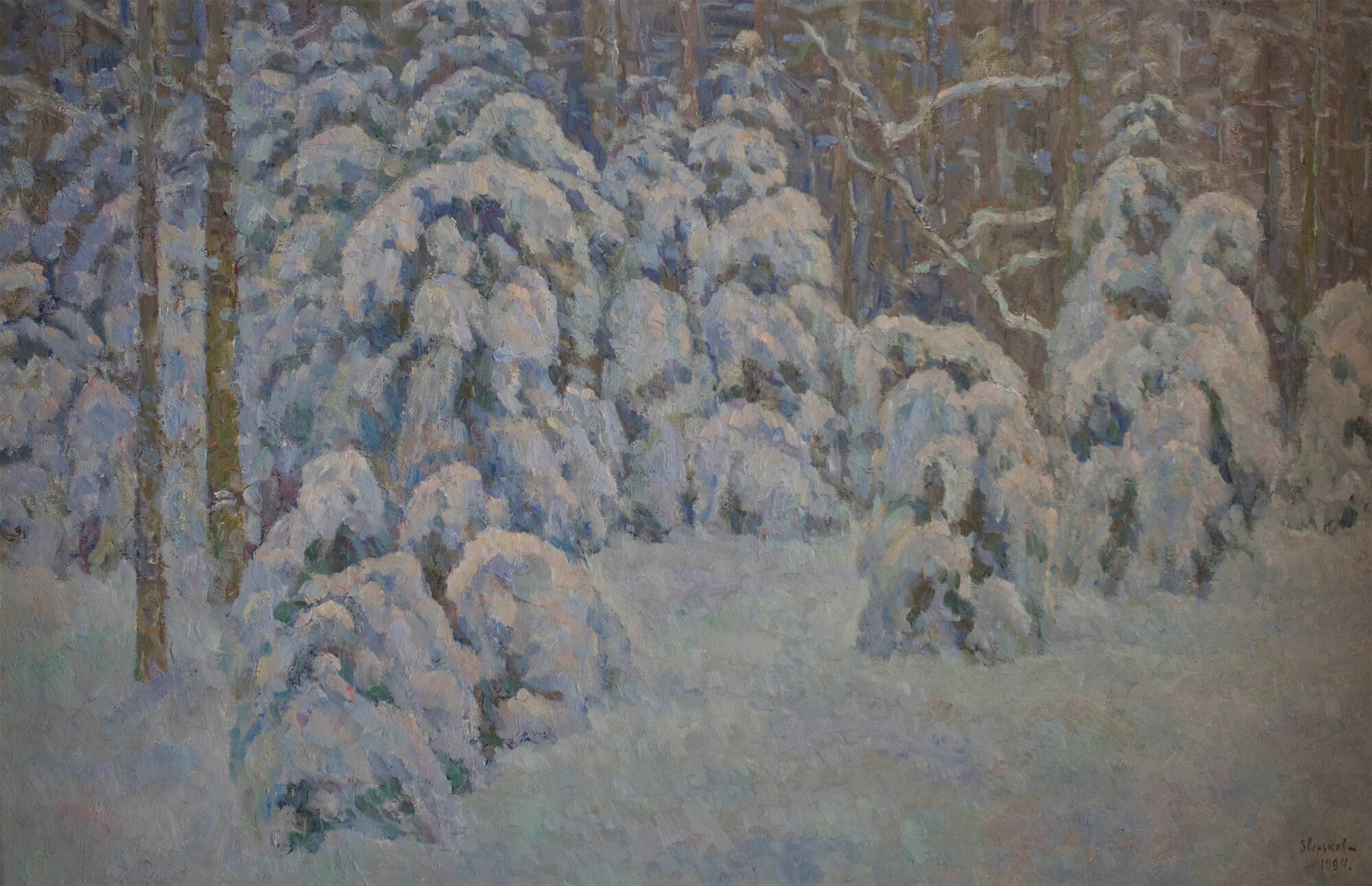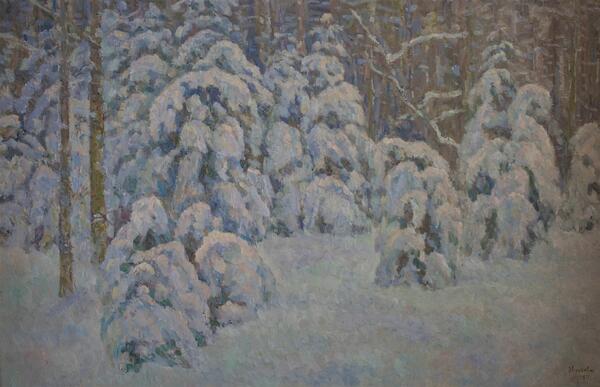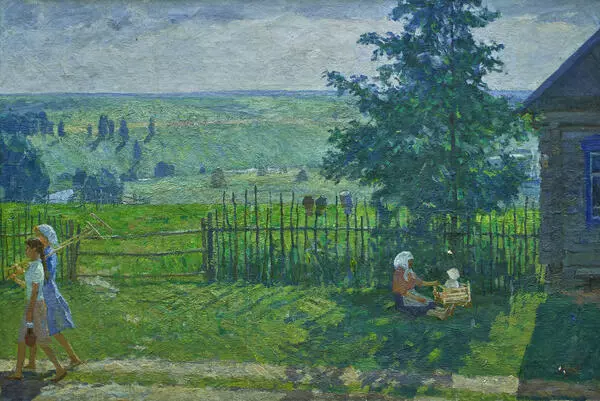In the 1984 canvas “Winter”, artist Efrem Zverkov depicted a snow-covered landscape, untouched by humans. In the foreground and middle plane, one can see pines buried in the snow, and in the background — an impassable thicket of tall tree trunks.
The composition is built diagonally. Although Zverkov did not add many details to the foreground, it is very concentrated and it seems that it is impossible to paint another stroke.
Efrem Zverkov was born in 1921 in the village of Nesterovo, Tver Oblast. In 1926, his family moved to Tver, where he began to take painting lessons from artist Nikolai Borisov, a graduate of the Imperial Academy of Arts and a follower of Ilya Repin. In 1939, Zverkov was accepted to the Preparatory Department of the Leningrad Institute of Painting, Sculpture and Architecture.
In 1939, the artist was drafted for military service in the Red Army. He was stationed with his military unit near Kharkiv, where two years later he learned that the Great Patriotic War had begun. After a retreat his unit was disbanded. In 1942, Zverkov was gravely wounded and hospitalized. When he recovered, he returned to the army and fought near Stalingrad.
After the war, Zverkov was taught by academician Boris Ioganson. He graduated with honors from the Surikov Moscow Art Institute, and regularly participated in Moscow, all-union and international exhibitions.
The beginning of his artistic career coincided with the Khrushchev Thaw era of the late 1950s. A large part of Efrem Zverkov’s oeuvre was dedicated to landscape painting: it became his main genre after the 1960s. The main motifs in Zverkov’s paintings were depictions of nature of his native Tver Oblast, the Russian North and Moscow Oblast.
In 1981, Zverkov received the title of People’s Artist of the USSR. In 1988, he was elected an academician of the Academy of Arts of the USSR. From 1994 to 1999, the artist was in charge of recreating paintings of the Cathedral of Christ the Savior in Moscow, and from 1997 to 2012 he served as Vice-President of the Russian Academy of Arts. The artist died in 2012 in Moscow and was buried in the Novodevichy Cemetery.
Zverkov’s works are now housed in the largest collections in Russia: in the Tretyakov Gallery, the Moscow Museum of Modern Art and the Russian Museum, in many regional art museums, as well as in public and private collections in France, Bulgaria, Italy, Belgium, the USA, Japan, China and other countries.
The composition is built diagonally. Although Zverkov did not add many details to the foreground, it is very concentrated and it seems that it is impossible to paint another stroke.
Efrem Zverkov was born in 1921 in the village of Nesterovo, Tver Oblast. In 1926, his family moved to Tver, where he began to take painting lessons from artist Nikolai Borisov, a graduate of the Imperial Academy of Arts and a follower of Ilya Repin. In 1939, Zverkov was accepted to the Preparatory Department of the Leningrad Institute of Painting, Sculpture and Architecture.
In 1939, the artist was drafted for military service in the Red Army. He was stationed with his military unit near Kharkiv, where two years later he learned that the Great Patriotic War had begun. After a retreat his unit was disbanded. In 1942, Zverkov was gravely wounded and hospitalized. When he recovered, he returned to the army and fought near Stalingrad.
After the war, Zverkov was taught by academician Boris Ioganson. He graduated with honors from the Surikov Moscow Art Institute, and regularly participated in Moscow, all-union and international exhibitions.
The beginning of his artistic career coincided with the Khrushchev Thaw era of the late 1950s. A large part of Efrem Zverkov’s oeuvre was dedicated to landscape painting: it became his main genre after the 1960s. The main motifs in Zverkov’s paintings were depictions of nature of his native Tver Oblast, the Russian North and Moscow Oblast.
In 1981, Zverkov received the title of People’s Artist of the USSR. In 1988, he was elected an academician of the Academy of Arts of the USSR. From 1994 to 1999, the artist was in charge of recreating paintings of the Cathedral of Christ the Savior in Moscow, and from 1997 to 2012 he served as Vice-President of the Russian Academy of Arts. The artist died in 2012 in Moscow and was buried in the Novodevichy Cemetery.
Zverkov’s works are now housed in the largest collections in Russia: in the Tretyakov Gallery, the Moscow Museum of Modern Art and the Russian Museum, in many regional art museums, as well as in public and private collections in France, Bulgaria, Italy, Belgium, the USA, Japan, China and other countries.




